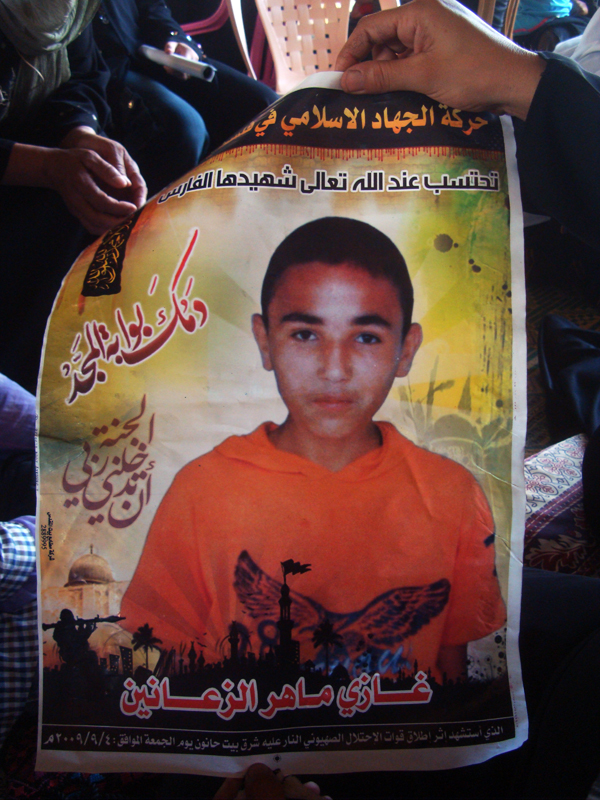In Gaza
 *wheat crops bulldozed in a roughly 15 metre wide track clawed into the land by Israeli military bulldozers and tanks.
*wheat crops bulldozed in a roughly 15 metre wide track clawed into the land by Israeli military bulldozers and tanks.A dry winter with very late rains –at the end of January, the last possible time for planting, the farmers said –followed by a dry spring evolved into the beginnings of a dry summer.
Called yesterday to accompany farmers in the Faraheen and Khoza’a regions, each east of Khan Younis, we were suddenly busy again. So it goes with the farmers who’ve been forced to give up high-maintenance agriculture and try for the lowest-maintenance crops possible: wheat, rye, lentils. No more trees, they’ve all been bulldozed too many times. Not so many potatoes, nor much parsley–they require more water than the sparse rains provided or the destroyed water cisterns, wells and piping allowed for.
Whereas before the heightened Israeli army aggressions against these visibly unarmed farmers they would live on their land, at the very least daily visit and work on it, they are now resigned to rushed attempts at sowing and harvesting some of Gaza’s richest soils, under the thud and whiz of Israeli army bullets.
We were to join Leila Abu Dagga’s sister to harvest 5 dunams of lentils. But when we arrived were told, “it’s gone, the Israelis bulldozed it all”. [The land in question is near where the young, deaf farmer was shot by an Israeli soldier last year. Over 500 metres from the border, I remember it well (and remember the shock of the Israeli soldiers having shot around us to reach this unarmed farmer just trying to earn 20 shekels a day. The horror: shit, is he dead? The disbelief: but they saw us farming for over 2 hours... why shoot now? The disgust: this kid is just trying to add to his large family's small income)]
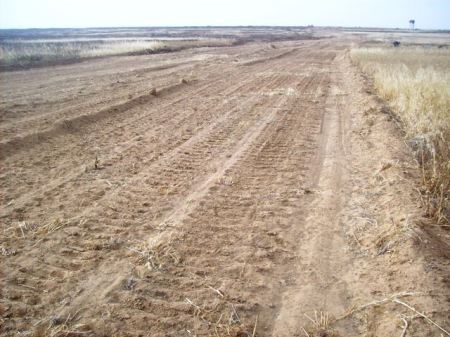 *a roughly 15 metre wide track clawed into the land by Israeli military bulldozers and tanks.
*a roughly 15 metre wide track clawed into the land by Israeli military bulldozers and tanks.
So we moved to Abu Tabbash land, roughly 12 dunams of wheat which we had accompanied the elderly farmer on four months ago. Then, the Israeli army jeeps had lorded atop earth mounds just across the Green Line border fence as Abu Khader walked the length of his accessible land, back and forth, hand-spraying wheat seeds.
 *Faraheen farmland [photo: Rada Daniell]
*Faraheen farmland [photo: Rada Daniell]As we arrive, shortly after 7 am, he tells us “we started at 5 am. The jeeps were there, but no shooting yet”. He is neither surprised nor grateful, just matter of fact. Matter of fact is the Israeli soldiers can appear at any moment and shoot at any moment, any whim. There is no pattern, no predictability, and the only seeming reason, quite obviously, is pure harrassment with the intent of driving Palestinians off their land and destroying the agricultural sector.
So farmers like Abu Khader risk working on their land, abadoning the tens, hundreds for some families, of dunams lost to within and near the Israeli-imposed “buffer zone”. But they do so at frantic paces, determined to work even the smallest section of their land.
“It’s quite remarkable,” says Adie, one of us accompanying the farmers. “It’s unbelievable that the Israeli army would fire on a scene like this. It’s one of the most tranquil things you could be doing, this hand-harvesting.”
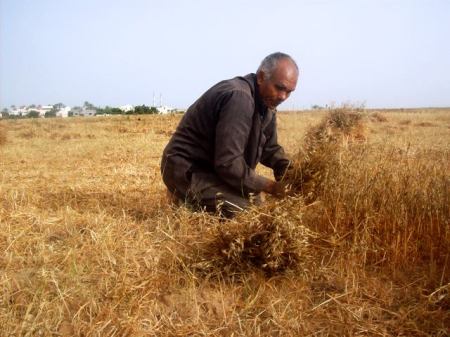
Abu Khader has the bearing, humility, and cracked heels of someone who has toiled the land all his life. His dignity shines, as does his sense of urgency to harvest the crop, and he wastes no time with small-talk or breaks.
Working with three other family members, he hand-plucks the wheat from its earth, noting “it’s so meagre this year. It should be up to here,” gesturing near head level.
They rip, pile and bundle wheat and the dry hay-grass which will serve as animal feed. The bundles are stuffed into large sacs or piled on too-small donkey carts and hauled off.
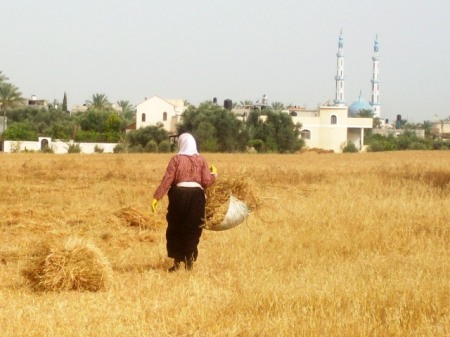
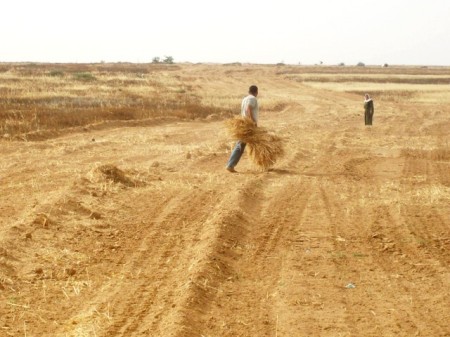



Day one they’ve harvested from 5 am to 10 am and call it a day. Day two –”there was shooting this morning,” we are told, and an hour and a half another round of shots at visibly unarmed farmers –they work roughly the same, with same intensity, saying “tomorrow we’ll finish, just need an hour and a half”.
We leave, some of the plucked wheat still in small piles to be collected the next morning.
We learn hours later that after farmers and accompaniers left the land, Israeli bulldozers crushed in and lit afire by incendiary devices the land in and along the “buffer zone” including Abu Khader Abu Tabbash’s remaining wheat.



